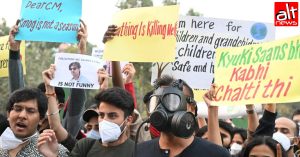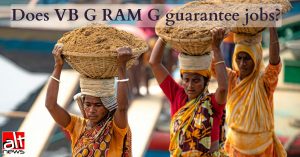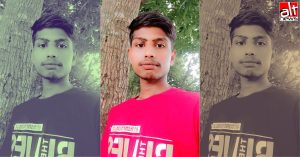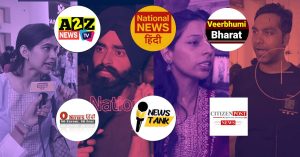Trigger Warning: Disturbing Images of Physical Injury
A quote often attributed to English author George Orwell defines journalism as printing what someone else does not want printed, and everything else as public relations. If one tracks how the alleged lynching of Aasif Babu Multani by cow vigilantes in Bhilwara was reported in the media, one would wonder if the Indian legacy media believes the contrary — that they should not report what the powers that be want swept under the carpet.
Aasif Babu Multani (35), also known by Sheru Susadiya, a resident of Mandsaur, Madhya Pradesh, was allegedly assaulted in the most brutal manner by ‘gau-rakshaks’ in Rajasthan’s Bhilwara on the intervening night of September 15-16. There was no report on this by the mainstream media in the next five days.
Multani died of his injuries five days later, on September 20.
The Indian Express and The Hindu were the only two media houses that reported it on September 22. The Hindu carried this story as a single column on Page 10 of their September 22 edition.
A handful of local and national media outlets picked it up only after Alt News co-founder Mohammed Zubair questioned the media’s silence on the matter in an X post on September 23 at 1:34 pm. Some of these outlets are ABP Live, Hindustan Times, Zee News and NDTV.
‘My Brother was Killed because of his Religion’
According to details available at the moment, the alleged lynching followed the pattern seen in other incidents of cow-vigilante violence to a tee.
Aasif Babu Multani was on his way back home with his cousin, Mohsin, after purchasing cattle for their agricultural and dairy needs from a market in Lambia Raila, Bhilwara, Rajasthan. Mohsin alleged that some vehicles started chasing their pickup van as they left for Mandsaur after having dinner at a dhaba. A car then overtook them and forced their van to stop. After this, around 14-15 men surrounded them, pulled them out of the car and started hitting them without hearing them out. The men also allegedly snatched the receipts for the cattle purchases. While Mohsin managed to free himself and run away, Aasif was severely assaulted. He alleged that the assaulters kept calling them cow smugglers.
According to the complaint filed at Banera police station by Multani’s brother, Manju Pemla, the accused were cow vigilantes who stole Rs 36,000 from Multani and then demanded an additional Rs 50,000 from his family to spare his life. They used Multani’s phone to call the family.
Multani was first admitted to a hospital in Bhilwara and then to the Sawai Man Singh Medical College and Hospital in Jaipur. He died on September 20. He is survived by his wife and two children.
In a statement to The Hindu, Pemla alleged that his brother had been killed because of his religious identity and that there weren’t any cows in the van. “There was not even a cow in the van but only oxen and buffaloes,” Pemla said.
Photos in the slide show below show the extent of injuries inflicted on the victim.
Five people have been arrested in connection with the case, and, according to a statement by Bhilwara SP Dharmendra Singh, a special investigative team had been formed to look into the case. he also said the cause of the death was “not clear yet”.
Demonstrations broke out in Mandsaur following Multani’s death, with protestors demanding accountability from the administration. Their key demands included the formation of a representative forum for the local Muslim community and financial support for the deceased’s family. The protest drew coverage only from local media outlets, evident from the microphones seen during the protestors’ media interactions.
A fact-finding team comprising the National Coordination of People’s Movements, Khudai Khidmatgar, CITU and CPI(M), led by activist Kripal Singh Mandloi, Shailendra Thakur, Vijay Bairagi, and Yash Lohar, visited the village and met the family, neighbours and relatives. Kripal told Alt News that it was the almost total absence of media reports on the case that prompted them to form a fact-finding team and visit the victim’s house.

The Choice not to Report a Hate Crime: What Does it Imply?
The almost non-reporting of Aasif’s death by the mainstream media poses several disturbing questions.
The reader must note here that the menace of cow vigilantism is now rampant across north Indian states. The vigilantes, who are often backed by local administrations as well as Hindutva outfits such as the Vishva Hindu Parishad and the Bajrang Dal, proudly showcase their violent activism by uploading videos and images of their ‘conquests’. And Aasif was the victim of this established pattern of vigilantism involving high-speed chasing and forcible stopping of the trucks, and the consequent assault.
Alt News have reported extensively on cow-vigilante violence and documented how the likes of Monu Manesar enjoyed government support. Recently, in collaboration with the Netherlands-based investigative journalism platform Bellingcat, Alt News reported on five ‘cow protector’ or ‘gau rakshak’ groups and their violent vigilantism. All of them posed as charitable organizations involved in animal welfare.
It is too commonplace to need reiteration that media attention on such cases forces the administration to act in spite of political pressure and in some cases helps the victims’ families get justice. This was evident from the Mohammed Akhlaq case in 2015 where the 52-year-old for man was killed on the mere suspicion of slaughtering a cow, or, the murders of Nasir (25) and Junaid (35) in 2023 by cow vigilantes in Haryana. One of the accused in the latter case, Rinku Saini, had direct links to Bajrang Dal Haryana. Both the incidents were extensively covered by the media, which sent ripples across the country and eventually forced law enforcement agencies to act.
When considered against this, the media’s scant attention to the Bhilwara lynching begs the question whether organized hate crimes against minorities, particularly Muslims, are being normalized in India. Or, in other words — and this is perhaps more disturbing — whether the alleged murder of a Muslim man from a remote village in the hands of vigilantes subscribing to the majoritarian political narratives is no longer seen by editors as newsworthy.
Quoting the Washington-based research group India Hate Lab, the BBC reported earlier this year that instances of hate speech against minorities jumped 74% in India in 2024, and Muslims were the target of over 98% of those. Alt News documented how the BJP’s entire Lok Sabha 2024 election campaign stood on falsehoods, disinformation and communal hate with which the party sought to create propaganda in its favour. This was led by none other than Prime Minister Narendra Modi.
In February this year, Amnesty International published two detailed reports documenting the punitive demolition of Muslim properties in at least five Indian states with the widespread use of bulldozers. Only a month ago, on August 15, standing at the ramparts of the Red Fort, Modi indulged in dog whistling against minorities when he cautioned his countrymen against ‘infiltrators’ in his Independence day speech. This came at a time when minority groups in India, including Muslims, Bengali-speaking migrants, Christian priests and nuns and tribes in the Northeast, were bearing the brunt of majoritarian muscle-flexing almost on a daily basis.
Given that violence against Muslims have not only become common, but also is often ignored by a section of the society, it becomes imperative for the media to doggedly pursue stories such as the ‘lynching’ of Asif Babu Multani. In failing to do so, the media has failed in one of its core purposes — telling stories of and for the marginalized and report hate crimes against the oppressed. And unfortunately, it can’t be called an oversight or justified with lack of wherewithal. On September 24, The Times of India reported on a ‘Brahmins’ protest’ in Bhilwara demanding an impartial probe into the suspicious death of one Sanwarmal Sharma. The report is datelined Bhilwara, which suggests that the paper has on-ground presence in the Rajasthan town. At the time of this article being written, the paper, India’s largest selling English daily, has not reported the alleged lynching of Multani at all.
That some outlets picked up the story after an X post by Mohammad Zubair also suggests a second thing — that the mainstream media today often follows, rather than leads, social media narratives. In this case, when the Alt News co-founder’s social media post gained traction, it compelled media outlets to take notice. Ideally, the process should be reversed — the media ought to report from the ground up, bringing news to its readers, not waiting for readers to drive the coverage.
Featured image illustration: Harsho Mohan Chattoraj
Independent journalism that speaks truth to power and is free of corporate and political control is possible only when people start contributing towards the same. Please consider donating towards this endeavour to fight fake news and misinformation.




